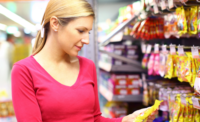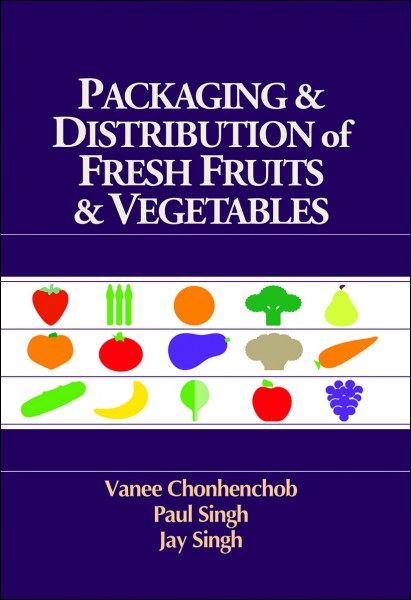Convenience packaging strives to meet retailers’, consumers’ expectations
Innovations offer reliable containment, product freshness, and recyclability.

Bakery and snack producers can choose from a wide range of convenience packaging solutions—single-serve, re-sealable, portion-controlled—to meet demands of retailers and consumers. The latest innovations offer reliable containment, product freshness, recyclability and sustainability, thus fitting the needs of on-the-go, convenience-oriented consumers.
The biggest benefits that convenience packaging offers is shelf life and resealability, which go hand in hand, according to Alison Keane, president and CEO, Flexible Packaging Association, Annapolis, MD. “You need the right barrier protection to protect the product and keep it fresh, not only until the consumer buys it, but once they buy it. Once the consumer takes it home, it has to remain fresh and have the right barrier protection with the right fit so that the consumer can eat the portion he wants, reseal it and have it remain fresh for the next portion.”
Finding the right barrier protection with mono materials (composed of a single type) is part of the current mission to achieve sustainability, Keane adds. “Mono materials are more easily recyclable than multi-material packaging, which is often used for enhanced barrier protection.”
Dennis Calamusa, president and CEO of ALLIEDFLEX Technologies Inc., Sarasota, FL, a supplier of flexible packaging machinery, sees a major shift in packaging that is helping to re-invent the growing snack sector--not just for large snack companies, but for new entrepreneurial players who see the marketing opportunities that are available.
“A good example is the snack nut industry, which in the past was a glass jar or metal can market,” Calamusa says. “Today that business has almost completely shifted from rigid packaging to new forms of flexible packaging for single-serve through larger multiple-serve package sizes via market outlets such as retail, club store and e-commerce distribution channels.”
Karen Reed, global director of marketing and communications for Kwik Lok, Yakima, WA, has noticed a trend toward requests for smaller portions in countries such as Japan where household size has decreased, space is at premium and the number of convenience stores has increased. “Kwik Lok closures allow for a package to be reclosed, regardless of the size. This allows smaller families or single consumers to make a purchase without concern about food waste. Bakery and snack producers can use our closures on multiple-size package offerings.”
Something new
Among new convenience packaging products recently introduced to the bakery and snack market, Presto Products, a business of Reynolds Consumer Products, Appleton, WI, offers the Fresh-Lock zipper style 8425. This 10-mm closure is designed to meet challenges associated with mono recyclable films; ink splitting associated with digital inks; and dry, flowable product applications. It works seamlessly with vertical form/fill/seal processes and is suitable for granular and snacks in small- to medium-sized pouches, the company reports.
“An addition to the sustainable 8000 series, this zipper is 100 percent recyclable as a component in a polyethylene recyclable package. The easy crushing locks require less heat for sealing, which helps protect recyclable films from distorting while allowing for faster converting cycles,” says Sarah Stieby, marketing manager of Fresh-Lock Closures.
Sealstrip Corp., Gilbertsville, PA, has introduced three convenience packaging solutions. First, the new FreshPak Barrier Plus feature supports high-barrier packaging, while providing easy opening and resealability. “This is a great benefit to brands that want longer shelf life and products containing fewer preservatives. Our standard FreshPak creates a hermetic package and Barrier Plus takes that up a notch,” says Heather Chandler, president.
Second, the company’s new ShortiSeal product creates a package with a 6-inch piece of resealable tape. The tape can be removed and repositioned to create a resealable package. “This reduces the cost of adding resealability while maintaining excellent package function,” Chandler says. “It is suitable for bulky items that may not have many servings but have a large package, or for bag-in-box products.”
Third, the company’s VerdeSeal recyclable material for resealable packaging offers sustainability benefits. “Sealstrip is partnering with brand owners to support them in creating their unique sustainability stories. Whether their goal is the reduction of plastic, a smaller carbon footprint or recyclability, we provide them with easy-open and reseal features that complement their goals,” Chandler adds.
Handles and spouts
TC Transcontinental Packaging, Chicago, which specializing in extrusion, lamination, printing and converting, offers a variety of convenience packaging features. The company can laser-score or create tear notches in order to produce packaging that is easy-to-open. “We also source valves and zippers to provide resealable packaging that is easy to dispense and pour,” says Rebecca Casey, senior vice president, marketing and strategy. “In addition, we produce packaging that includes handles, spouts and unique shapes that add to user convenience.”
ALLIEDFLEX Technologies Inc. provides machine solutions for single-serve convenience sizes; popular retail sizes; and large family sizes purchased through club stores or e-commerce. “Our packaging machinery includes vertical and horizontal pre-made standup pouch systems with the ability to automate standup/zipper pouches through large quad-seal bag formats,” Calamusa says.
Packaging materials play an important role in convenience packaging. Demand for ready-to-eat foods and sustainability have helped to bring about a surge in polypropylene demand, according to Sean Riley, senior director, media and communications for PMMI, Reston, VA. “Benefits of using polypropylene include its lightweight, clarity, affordability, sustainability and resistance to high and low temperature, such as that in a microwave oven or a freezer, while maintaining freshness and durability. We expect demand for polypropylene to increase and perhaps take share from polyethylene terephthalate in food packaging applications.”
Sealed Air, Charlotte, NC, recently introduced Plant-Based Rollstock as a step toward more sustainable packaging. It utilizes high-barrier, renewable, bio-based material as a replacement for petroleum-based plastics while offering the benefit of a high oxygen barrier to maintain or extend the shelf life of bakery and snack products.
“The real benefit for bakery and snack producers is they can replace their current packaging material with a more sustainable option, which consumers are looking for to reduce the environmental impact of plastics,” says Scott Corey, director of marketing. “Plant-Based Rollstock is ideal for small, on-the-go portion sizes and can be used with our Flex-Lok easy-open, reclose lid film to create a consumer-friendly package for snacking.”
Adding accessibility
Adding convenience features for visually impaired people is an area that is starting to gain traction in the industry. The use of QR (quick response) codes is being looked at as a solution to many packaging challenges, which includes providing consumers with product information as well as the packaging and its end-of-life management, according to Keane. “When scanned, new QR codes activate an audio message that provides visually impaired people with product information.”
Kellogg Europe has announced plans to switch its standard cereal boxes to ones that feature accessibility minded technology. The 2022 rollout will use NaviLens technology. The switch will allow blind and visually impaired people to shop with greater ease. Each box will feature a high-contrast on-pack code that will be detected via a NaviLens smartphone app.
Users need not locate the code on the box, as the app will find the code from up to 3 meters away. Once detected, product information—including ingredients, possible allergens and recycling tips—will be read aloud. Sighted consumers can read the information on their phones. Special K will be the first of the brand’s cereals to feature the new packages. The rollout follows a successful trial period, launched in fall 2020 in honor of World Sight Day. During the trial, the British grocery chain Co-op featured Coco Pops boxes equipped with NaviLens technology.
“The incorporation of the NaviLens codes onto food packaging is a positive step towards a more inclusive and accessible shopping experience for the visually impaired,” says NaviLens CEO Javier Pita, “It allows people with sight loss to shop more independently and make their own food choices.”
Looking ahead, convenience packaging solutions seem to be pointing to a brave new world for retailers, consumers, and bakery and snack producers.
Looking for a reprint of this article?
From high-res PDFs to custom plaques, order your copy today!









